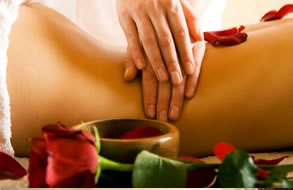Learn Shiatsu
Learning How Shiatsu can work for you
Bring in the new year - Learn Shiatsu's Introduction to shiatsu contains very important pointers that will help you learn the art of Shiatsu effectively; it also presents some important 'do's and don'ts' to consider when giving a Shiatsu treatment.
See commonly asked questions about Yoga
Therefore it is strongly recommended that you read it carefully before proceeding to Part One.
- Yin and Yang
- THE ABDOMEN TREATMENT
- Leg Pressure Points
- Preparing for a Shiatsu Session
- The Five Elements
- Shoulder pressure points
- THE STEP-BY-STEP SEQUENCE
- RESOURCES
- The origins of Shiatsu
- Techniques
- How to find the points
- POINTS TO REMEMBER
- How much pressure to use
- SELF-SHIATSU
- Choosing a school or practitioner
- SELF-TREATMENT
- Shoulders Treatment
- Vital organs
- Energy channels
- TREATING THE INDIVIDUAL
- DEVELOPING YOUR TECHNIQUE
- Energy in the hands
- Hara and breathing
- SELF-DEVELOPMENT EXERCISES
- Back of body treatment
- Front of leg pressure points
- Toe Treatment
- Tsubos
- Kyo and Jitsu
- Increasing your sensitivity
- Governing Vessel
- Forehead Massage

Other sites to look at
| capital-spas.co.uk |
| katyperrybeauty.co.uk |
Yin and Yang
The concept of Yin and Yang is another distinctively oriental way of understanding how energy works, and one that is fundamental to the whole of Eastern cosmology, and to the oriental understanding of how the body organizes itself. The well-known symbol for Yin/Yang shows how each force tends to contain an element of its opposite.
The concept of Yin and Yang was first set down thousands of years ago in the ancient Chinese classic, the I Ching, or Book of Changes, but awareness of it probably goes back further still. All energies and phenomena in the universe can be classified as predominantly either more Yin or more Yang. But each phenomenon contains an element of both, as expressed in the famous symbol, and it is important to remember that the analysis can only be used comparatively. No single phenomenon or force is absolutely Yin or Yang, but only by comparison with or in the context of another phenomenon or force.
Furthermore, the manifestation of the two types of energy is dynamic and always changing and interplaying, as in ongoing natural cycles such as day and night, winter and summer, birth and death and so on. Thus the qualities of Yin and Yang respectively are usually described in terms of corresponding pairs of opposite adjectives - light and dark, hot and cold, male and female and so on. Yang energy is more dynamic, active and outwardly manifest; Yin energy is more passive, internalized and inherently less evident. Yin and Yang are 'complementary opposites', and they always tend to operate together to bring any situation into a state of balance or resolution. Thus an extreme Yin phenomenon will become less extreme by attracting an element of Yang energy, and vice versa.
Examples of complementary opposites:
More Yin More Yang
Stillness Movement
Shade Sun
Cold Warmth
Darkness Light
Passive Active
Inward Outward
Invisible Visible
Soft Hard
Wet Dry
Female Male
In Shiatsu terms, the concept of Yin and Yang is helpful in a number of ways. Firstly, as all Ki arises as a manifestation of the interaction of Yin and Yang qualities, learning to distinguish between these relative qualities as they appear in the body can deepen our understanding of the way Ki operates there. The meridians themselves are divided between Yin and Yang: the Yang channels run down the back of the body and outer edges of the limbs, and are associated with the more 'solid' or yang organs, such as spleen, heart and kidneys; Yin channels are located on the softer front of the body, and serve the more Yin, more 'hollow' organs like stomach, small intestine and bladder. Thus we can better understand the organ and meridian pairings. The meridians are divided between Yin and Yang as follows:
More Yin More Yang
Large Intestine Lung
Stomach Spleen
Small Intestine Heart
Bladder Kidney
Triple Heater Heart Governor
Gall Bladder Liver
Secondly, we can use Yin/Yang understanding to apply the appropriate form of treatment or correction, for instance by reducing extremes of Yin or Yang. We will look at this further when we consider principles of individual treatment. Yin/Yang is also a fascinating concept in itself, and if you study it further there is no end to the ways you can find to apply it to other departments of your life. Finally, the concept of Yin/Yang leads us into the classical Chinese Five Element system.
Yin and Yang
The concept of Yin and Yang is another distinctively oriental way of understanding how energy works, and one that is fundamental to the whole of Eastern cosmology, and to the oriental understanding of how the body organizes itself. The well-known symbol for Yin/Yang shows how each force tends to contain an element of its opposite.
The concept of Yin and Yang was first set down thousands of years ago in the ancient Chinese classic, the I Ching, or Book of Changes, but awareness of it probably goes back further still. All energies and phenomena in the universe can be classified as predominantly either more Yin or more Yang. But each phenomenon contains an element of both, as expressed in the famous symbol, and it is important to remember that the analysis can only be used comparatively. No single phenomenon or force is absolutely Yin or Yang, but only by comparison with or in the context of another phenomenon or force.
Furthermore, the manifestation of the two types of energy is dynamic and always changing and interplaying, as in ongoing natural cycles such as day and night, winter and summer, birth and death and so on. Thus the qualities of Yin and Yang respectively are usually described in terms of corresponding pairs of opposite adjectives - light and dark, hot and cold, male and female and so on. Yang energy is more dynamic, active and outwardly manifest; Yin energy is more passive, internalized and inherently less evident. Yin and Yang are 'complementary opposites', and they always tend to operate together to bring any situation into a state of balance or resolution. Thus an extreme Yin phenomenon will become less extreme by attracting an element of Yang energy, and vice versa.
Examples of complementary opposites:
More Yin More Yang
Stillness Movement
Shade Sun
Cold Warmth
Darkness Light
Passive Active
Inward Outward
Invisible Visible
Soft Hard
Wet Dry
Female Male
In Shiatsu terms, the concept of Yin and Yang is helpful in a number of ways. Firstly, as all Ki arises as a manifestation of the interaction of Yin and Yang qualities, learning to distinguish between these relative qualities as they appear in the body can deepen our understanding of the way Ki operates there. The meridians themselves are divided between Yin and Yang: the Yang channels run down the back of the body and outer edges of the limbs, and are associated with the more 'solid' or yang organs, such as spleen, heart and kidneys; Yin channels are located on the softer front of the body, and serve the more Yin, more 'hollow' organs like stomach, small intestine and bladder. Thus we can better understand the organ and meridian pairings. The meridians are divided between Yin and Yang as follows:
More Yin More Yang
Large Intestine Lung
Stomach Spleen
Small Intestine Heart
Bladder Kidney
Triple Heater Heart Governor
Gall Bladder Liver
Secondly, we can use Yin/Yang understanding to apply the appropriate form of treatment or correction, for instance by reducing extremes of Yin or Yang. We will look at this further when we consider principles of individual treatment. Yin/Yang is also a fascinating concept in itself, and if you study it further there is no end to the ways you can find to apply it to other departments of your life. Finally, the concept of Yin/Yang leads us into the classical Chinese Five Element system.
Prices and Tuition
£50 for "First Session" Pilates or Pilates/Yoga or Yoga session, 1 1/2 -2 hours (where a consultation is involved). The first Pilates only or mixed Pilates/Yoga session is £50 for 1 1/2 - 2 hours. £30 for 1 hour £45 for 1 1/2 hours (Minimum rate is £45 for 1 1/2 - 2 hours unless it's a regular £30 1 hour session. ) £60 for 2 hours Other options are available, contact us if for other options. One-to-one rate/small group rates (2-4 clients, rate is the total payment, irrespective of number of participants.) Price reductions are negotiable for regular sessions.
